1. Meatloaf
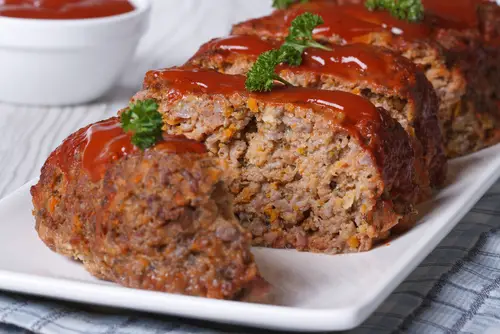
Meatloaf shows up on dinner tables across America, but it’s rarely anyone’s favorite. It’s basically ground beef mixed with breadcrumbs, eggs, and ketchup, baked into a dense loaf. For many people, it ends up dry and crumbly, leaving you chasing each bite with a gulp of water. The nostalgia factor keeps it around, but most admit it’s more tradition than taste.
Even the sauces can’t save it for everyone. Ketchup glaze on top tends to split people into camps: either it’s a comfort or an odd pairing. And reheated meatloaf the next day? That’s where many draw the line. Still, it’s considered a staple of “classic American comfort food.”
2. Green Bean Casserole
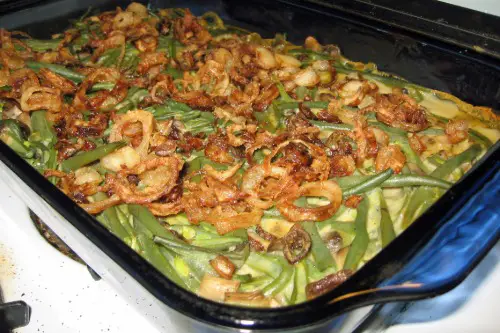
This dish was invented in the 1950s as a way to sell more canned soup. It’s literally canned green beans, cream of mushroom soup, and fried onions mixed together. The texture tends to be mushy, with only the crunchy topping offering relief. Yet, it shows up on almost every Thanksgiving table without fail.
Many people eat a spoonful out of obligation and then move on to the turkey. It’s not that green beans themselves are unpopular—it’s just that drowning them in soup makes them lose all appeal. But because it’s easy to make and has been passed down for generations, it stays in the rotation. The dish is proof that nostalgia sometimes wins over flavor.
3. Bologna Sandwiches

Bologna is a processed meat that has a distinct, almost rubbery texture. When slapped between two slices of white bread with a smear of mayo, it becomes a “classic” sandwich. But most people will admit it’s something they ate as kids because it was cheap, not because it was delicious. Adults often cringe at the thought of going back to it.
The flavor is salty and uniform, with none of the character of real deli meats. Sometimes people fry it to give it a little more depth, but that’s basically admitting it needs help. Despite this, it’s been a school lunchbox regular for decades. Nostalgia keeps it alive, not genuine culinary appeal.
4. Grits

Grits are cornmeal boiled into a porridge-like consistency, popular in the South. They’re often served plain with butter or with cheese to add some flavor. The truth is, many people find them bland on their own, with a texture that borders on gritty baby food. They’re more tolerated than loved outside of regional pride.
Hotels and diners often serve them as a side, but plenty of travelers leave them untouched. Even people who grew up with grits admit they’re an “acquired taste.” They’re considered comforting because they’re filling and warm, not because they’re bursting with flavor. Without heavy seasoning or mix-ins, they tend to fall flat.
5. Fruitcake
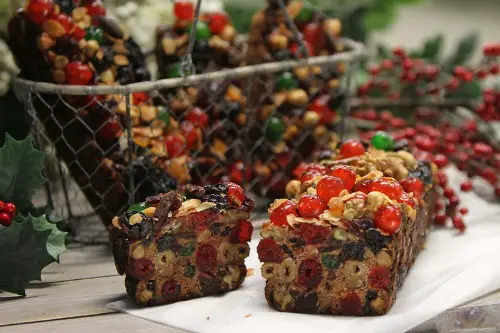
Fruitcake has become the butt of holiday jokes for decades. Made with candied fruits and nuts baked into a dense loaf, it’s famous for lasting forever without spoiling. Most people will politely accept a slice at Christmas but won’t seek it out any other time. The sweetness feels artificial, and the texture is closer to a brick than cake.
Despite its reputation, fruitcake has staying power because it’s tied to tradition. Some families even pass down fruitcakes from one year to the next. The joke that nobody eats them isn’t far from the truth. But still, it remains a cultural holiday staple.
6. Tater Tot Hotdish
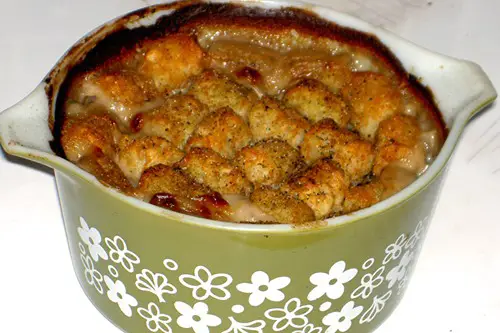
In the Midwest, hotdish is almost a way of life, and the tater tot version reigns supreme. It usually involves ground beef, canned cream soup, frozen vegetables, and a layer of tater tots baked on top. The tots get soggy instead of crispy, which takes away their main appeal. Still, families serve it at gatherings as though it’s a necessity.
The dish is considered “comforting” because it’s hearty and filling. But let’s be honest—most people would rather just eat a plate of crisp tater tots on their own. The casserole format feels like a downgrade of all the ingredients. It’s survival food disguised as nostalgia.
7. Spam

Spam was born out of necessity during World War II and became a kitchen staple in hard times. It’s a canned pork product with a texture that’s somewhere between ham and mystery meat. People fry it, bake it, or dice it into dishes, but the gelatinous blob straight out of the can is hard to forget. It’s eaten out of habit and convenience more than true craving.
Even its biggest fans admit Spam isn’t exactly gourmet. Its salty, processed flavor dominates anything it’s paired with. Still, it holds a place in American culture because of its history and its role in low-cost meals. Comfort food here is about familiarity, not flavor.
8. Salisbury Steak
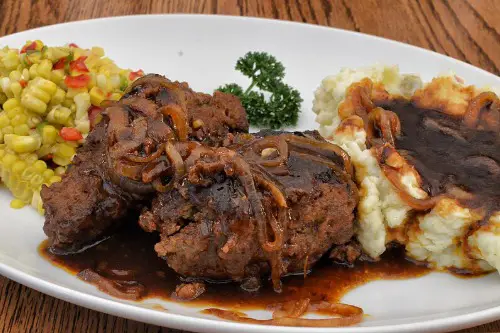
This is essentially a hamburger patty dressed up with gravy. It was popularized as a TV dinner option in the mid-20th century. The meat is often filler-heavy, making it spongy rather than juicy. The brown gravy hides a lot, but not enough to make it crave-worthy.
Salisbury steak survives because it’s inexpensive and filling. It often brings back childhood memories of frozen meals eaten in front of the TV. But ask most adults if they’d order it at a restaurant, and you’ll probably get a laugh. It’s one of those meals nobody loves but everyone recognizes.
9. Canned Cranberry Sauce
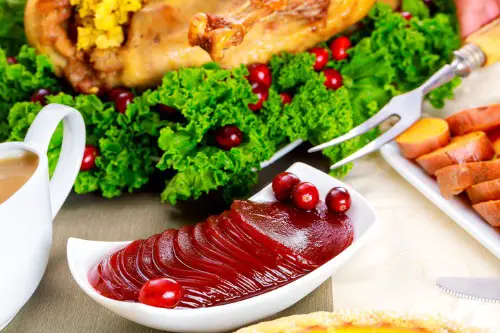
The jiggly, can-shaped cylinder of cranberry sauce shows up at Thanksgiving without fail. Its sugary sweetness barely resembles real cranberries. Most people take a spoonful out of tradition, then ignore the rest of the can. The ridges from the tin make it look more like dog food than a festive side.
Homemade cranberry sauce is flavorful, but the canned version dominates because it’s cheap and easy. It’s comforting in the sense that it “completes” the holiday table. Still, very few would eat it outside of that one day a year. It’s a dish that survives purely on nostalgia.
10. Jell-O Salad
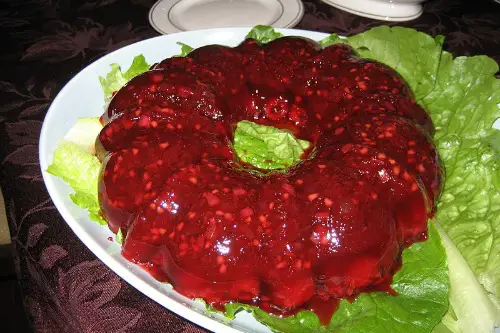
Jell-O salad is a relic of mid-century America, when gelatin-based dishes were all the rage. It often combines flavored gelatin with canned fruit, marshmallows, or even shredded vegetables. The textures clash—chewy, slimy, and crunchy all in one bite. It looks festive but tastes more confusing than comforting.
Families in the Midwest still serve it at reunions and potlucks. It’s colorful, cheap to make, and easy to transport, which explains its staying power. But most people admit it’s more fun to look at than to eat. It’s comfort food for the eyes, not the stomach.
11. Sloppy Joes

Sloppy Joes are basically ground beef simmered in a sweet, tangy sauce and dumped on a hamburger bun. The result is a sandwich that falls apart the second you pick it up. Most kids eat them at school lunches or camp, where messiness is part of the fun. As adults, the appeal drops quickly.
The sauce is often too sugary, making it more like meat-flavored ketchup than a savory dish. People may associate them with childhood, but they rarely make them at home. They’re comfort food by memory, not by flavor. If they disappeared tomorrow, few would miss them.
12. Creamed Corn
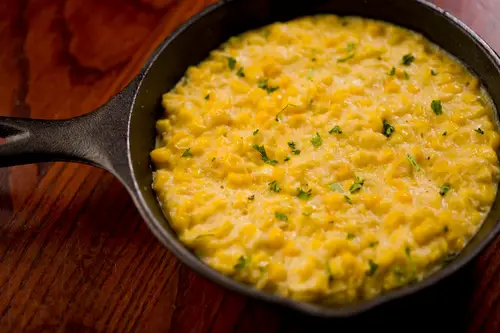
Creamed corn is corn kernels cooked down in a thick, milky sauce. The texture is mushy, and the sweetness can feel cloying rather than refreshing. It’s often served as a holiday side dish, but many people push it around their plate instead of eating it. The dish lacks the freshness of simple buttered corn.
Despite this, it’s considered comforting because it’s warm and filling. It’s been a go-to side for potlucks and family meals for decades. But the truth is, most people prefer corn on the cob or just plain frozen corn. Creamed corn lingers mostly out of habit.
13. Chicken à la King

Chicken à la King was once a fancy dish, but it’s fallen into “comfort food” territory. It’s diced chicken, mushrooms, and peppers in a creamy sauce, often ladled over rice or biscuits. The problem is, the sauce tends to be heavy and gloopy. Instead of elegant, it comes off as cafeteria food.
The dish gained popularity in the mid-20th century because it stretched ingredients and filled bellies. Today, it mostly appears in nostalgic cookbooks or as a throwback dish at potlucks. People eat it because it feels familiar, not because they love it. It’s more survival food than something to savor.
14. Ambrosia Salad
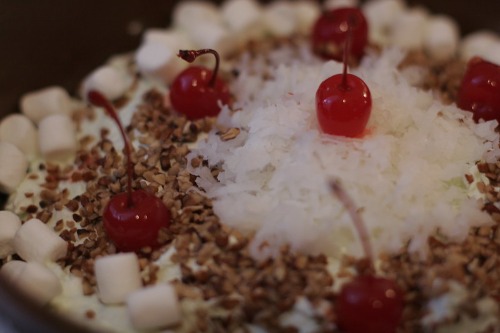
Despite the name, ambrosia salad is more sugar than salad. It usually involves canned fruit, mini marshmallows, coconut, and whipped cream. The combination is sticky-sweet, with no real balance of flavor. It feels more like a dessert accident than a dish anyone craves.
Still, it appears on holiday tables, especially in the South. It’s colorful and easy to make, which explains its staying power. But even fans admit it’s a dish you take a spoonful of and move on. It’s comfort food by tradition, not by taste.
15. Chipped Beef on Toast

Also known as “SOS” (short for “stuff on a shingle,” though the “S” usually stands for something less polite), this was a staple military meal. It’s dried beef in a creamy white sauce, poured over toast. The salty, chewy meat combined with thick gravy doesn’t exactly scream “comfort.” But for generations of soldiers, it was familiar.
When it made its way into civilian kitchens, it stuck around as a cheap breakfast or lunch option. Still, few people would call it delicious—it’s more about nostalgia or military pride. The nickname alone proves it’s not widely beloved. Yet, it’s considered a comfort food in American culture.
16. Macaroni Salad

Macaroni salad shows up at every picnic, barbecue, and church potluck, but it’s rarely the first thing anyone piles onto their plate. Made with elbow pasta, mayonnaise, and diced vegetables, it often ends up overly mushy and drowning in dressing. The flavors lean heavy on mayo, leaving the pasta bland and the veggies soggy. People take a spoonful because it’s expected, not because they’re actually excited about it.
It lingers on buffet tables because it’s cheap and easy to make in bulk. The creamy texture can feel cloying, especially under the sun at a hot outdoor event. Leftovers don’t age well, either, turning watery and limp by the next day. Still, it survives as a “comfort food” purely for its association with gatherings, not because anyone loves the taste.
17. Liver and Onions
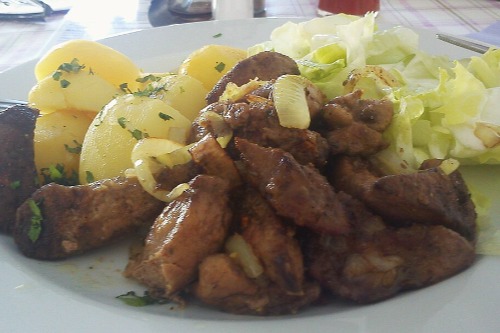
Liver and onions were once promoted as a hearty, nutrient-rich dinner, but few people truly enjoy them. The liver itself has a strong, metallic flavor that can overwhelm even the sweetest caramelized onions. Its dense, chalky texture doesn’t help, leaving many to chew reluctantly while forcing a polite smile. Most people who grew up eating it recall it more as punishment than comfort.
Even when prepared well, liver remains divisive. For every person who insists it’s underrated, there are ten who refuse to go near it. Restaurants rarely put it on the menu anymore, except in throwback diners. It survives as a nostalgic memory in American cooking, but not as a food people eagerly crave.
18. Deviled Ham Spread

Deviled ham is basically minced ham mixed with mayo, mustard, and spices, often sold in tiny cans. Spread onto crackers or bread, it’s supposed to be quick comfort food. In reality, its overly salty, mushy consistency makes it feel more like a dare than a treat. The taste is closer to mystery meat than the ham it claims to be.
Despite that, deviled ham has held on for decades as a cheap pantry staple. It’s the kind of snack someone keeps “just in case” but rarely opens with enthusiasm. People eat it more for convenience or nostalgia than genuine enjoyment. Like many foods on this list, it’s comfort through familiarity, not flavor.
19. Cabbage Soup

Cabbage soup has been around forever, often tied to frugality and diet fads. It’s simply cabbage simmered with broth and maybe a few vegetables, resulting in a watery, sulfurous-smelling dish. The flavor is bland at best and off-putting at worst, making it more of a chore than a comfort. For many, the smell alone is enough to ruin the appetite.
It pops up in weight-loss trends because it’s low-calorie, not because it’s satisfying. Families with immigrant roots may still serve it as a cultural staple, but even then, it’s tolerated more than loved. The soup fills you up but doesn’t deliver any joy in the process. Comfort food status here comes from practicality, not passion.
20. Tapioca Pudding

Tapioca pudding is one of those desserts that divides the room instantly. Made from tiny tapioca pearls suspended in a milky custard, the texture is often compared to fish eggs. For some, it’s a nostalgic treat from childhood, but for many, the consistency is downright unsettling. The flavor itself is mild and often overshadowed by the strange mouthfeel.
It continues to appear in school cafeterias and at family gatherings because it’s easy to prepare and stretches ingredients. Older generations tend to defend it as a classic, while younger ones politely push it aside. Few people truly crave tapioca pudding when other desserts are available. It hangs on because it’s remembered, not because it’s loved.
21. Stewed Prunes
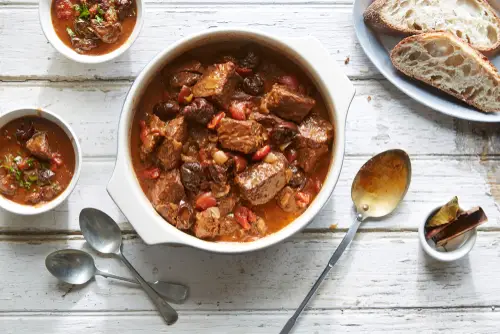
Stewed prunes were once considered a wholesome, comforting dish, especially for older generations. They’re prunes simmered until soft in a sugary syrup, which only enhances their sticky sweetness. While they were praised for being “good for you,” their overly mushy texture made them a dreaded offering for kids at the dinner table. Comfort wasn’t the first word that came to mind.
They persist in cookbooks and nostalgic menus, but rarely because anyone enjoys them. Instead, they’re tied to tradition and health claims from decades past. People may serve them out of habit, but they’re usually eaten reluctantly. Stewed prunes are a classic example of a “comfort food” people endure rather than embrace.
This post 21 “Comfort Foods” Americans Eat Even Though Nobody Actually Likes Them was first published on American Charm.


